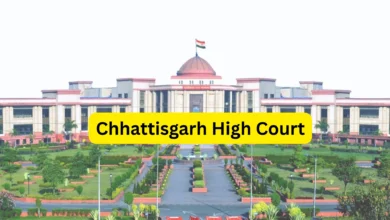Dismissal from Service Leads to Forfeiture of Leave Encashment Benefits: High Court

In a significant ruling, the Gauhati High Court, led by Chief Justice and Justice N. Unni Krishnan Nair, overturned the order issued by the Central Administrative Tribunal (CAT) directing the Railways to release leave encashment benefits to a dismissed employee. The Court ruled that dismissal from service automatically results in the forfeiture of past service under Rule 40 of the Railway Services (Pension) Rules, 1993, which in turn leads to the forfeiture of all accumulated leave under Rule 504 of the Indian Railway Establishment Code (IREC). The Court clarified that there is no need for an explicit mention of the denial of leave encashment in the dismissal order, as it is an automatic consequence of dismissal.
Background of the Case
The case stemmed from disciplinary proceedings against Utpal Datta Talukdar, a Railway employee who was dismissed from service without any compassionate allowance (such as pension and gratuity). After his dismissal, Talukdar attempted to claim his Provident Fund dues, Group Insurance Scheme benefits, and Leave Encashment. When his claims were not addressed, he approached the Central Administrative Tribunal (CAT), Guwahati Bench, which ordered the Railways to release his Leave Encashment benefits. The Union of India challenged this decision before the Gauhati High Court.
Arguments Presented
The Union of India argued that Rule 504 of the IREC clearly states that any claim to leave credits ends upon dismissal, removal, or resignation of a Railway employee. Therefore, the Union contended that the CAT had erred in not considering Rule 504 in its ruling.
On the other side, the respondents (Talukdar’s legal representatives) argued based on Rule 542(2)(b) of the IREC, which mandates the crediting of earned leave at the rate of 2½ days per completed month of service until the month preceding the dismissal. They contended that this suggested dismissed employees still had a right to leave encashment. They also cited Rule 550(B)(1)(ii) of the IREC, which discusses the cash payment for leave in certain circumstances. They further argued that since the dismissal order only explicitly withheld pension and gratuity but did not mention leave encashment, the benefit of leave encashment should not be denied.
Court’s Reasoning
The Court first examined Rule 504 of the IREC in conjunction with Rule 40 of the Railway Services (Pension) Rules, 1993, which states that dismissal leads to the forfeiture of past service. The Court concluded that since leave is earned through service, the forfeiture of past service automatically results in the forfeiture of any accumulated leave. Therefore, Talukdar was not entitled to leave encashment.
Next, the Court addressed the arguments based on Rule 542(2)(b), clarifying that while this rule outlines how earned leave is calculated, it does not grant dismissed employees an entitlement to leave encashment. Similarly, Rule 550(B)(1)(ii), which deals with cash payments in lieu of leave, was found to be inapplicable, as it was not intended for employees who had been dismissed.
The Court also rejected the argument that the dismissal order needed to specifically mention the denial of leave encashment. It emphasized that the forfeiture of leave is an automatic consequence of dismissal, directly tied to the forfeiture of past service, and does not require a specific mention in the dismissal order. The Court ruled that the disciplinary authority is not obligated to make a separate statement regarding leave encashment when dismissing a Railway employee.
Conclusion
Ultimately, the High Court found that the CAT had made a fundamental error in concluding that Rule 504 was irrelevant to leave encashment claims. The Court ruled in favor of the Union of India, setting aside the CAT’s order and reaffirming that the forfeiture of past service due to dismissal results in the forfeiture of any accrued leave. The petition was allowed, and the CAT’s direction for the Railways to release leave encashment benefits was overturned.
